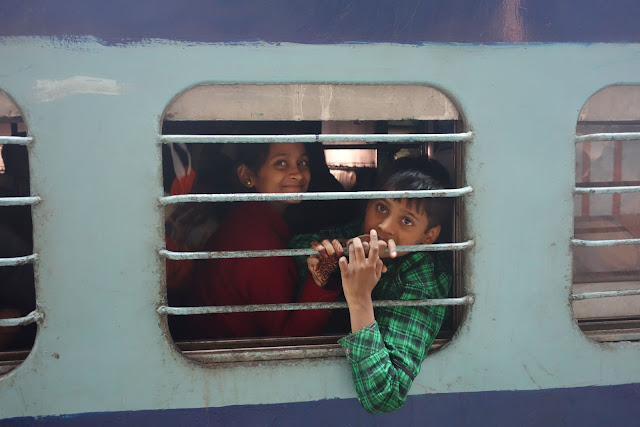Although the Nadesar Palace in Varanasi wasn't my favorite hotel of the trip, I can't say I've ever stayed any place nicer. Look what we found in each of our rooms. I think there were only ten altogether.
There seemed to be a floral arrangment around every corner.
Originally built by the East India Company but acquired by the local maharaja in the 19th century, the rooms are named for famous guests. Chris and Dan stayed in the Queen Elizabeth suite. Chris posted this photo on Facebook almost immediately.
In case there were any doubts about the provenance of the room, this page from the hotel guestbook hung on the wall.
With another free morning on our hands, Matthew and I left this opulence behind for a walk to the train station that took us through some back streets. A boy comforted a donkey.
A man milked his water buffalo.
People open shops like they do in New York, by lifting the metal grate.
Others sell fresh vegetables from push carts.
There aren't any stoplights in Varanasi, so directing traffic is a Sisyphean task.
Matthew plugged his ears when dodging tuk tuks.
The train station definitely had an Indian feel.
The timetables alternated between Sanskrit and English.
I don't think I've ever seen longer passenger trains which, like the rest of India, were jammed with friendly people.
A fruit vendor carried a scale on his back.
Another chopped onions for his soup right on the curb directly across from the busy station.
Dung patties, which are used for fuel, dried on the side of a building a short distance away.
Look at the fanciful decoration on this pedicab.
Not to be outdone by this Hindu wedding carriage parked on the side of the road.
Speaking of carriages, look who we found back at the hotel in the Royal Buggy.
They never left the grounds. They didn't have to.


















































